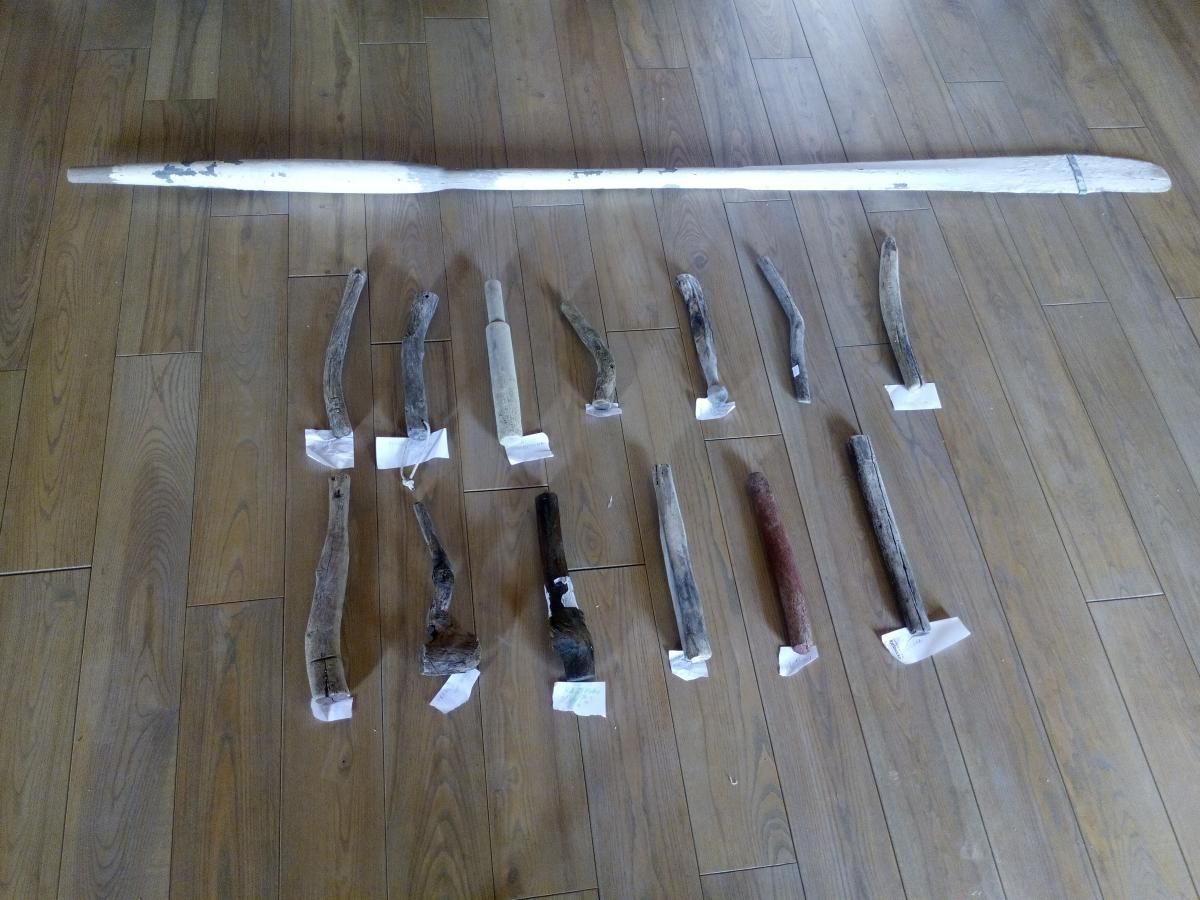I'm really starting to stretch the notion of art here, but for what it's worth, I think there are many facets of tradition and cultural heritage that are deserving of that prestigious title. Some of the islands on the Adriatic have been inhabited for two millenia; think of all the generations of fishermen and boatbuilders taking care of their families in often strenuos conditions. Think of all the knowledge and skills passed down from father to son, from mother to daughter, and then remember some of those skills managed to survive and stay in practice even today. If that's not worth a bit of respect, I don't know what is – for me, traditional boatbuilding rightfully has a place in the art category.
On the island of Mljet, as part of the National Park of the same name, you'll find a charming place called Ethno village Goveđari. Starting from August 25, the Stara Skula Gallery in Goveđari is hosting an attractive exhibition featuring an array of traditional fishing tools used on Mljet – very specific fishing tools.

Dubrovački vjesnik
Called macaburio (or macaburijel, but the first one might be easier to pronounce), the large wooden stick is used for a number of purposes around any given boat, but it's best known for its use in fishing. In case you're lucky enough to catch a larger specimen, you would use the macaburio to deal the final blow to the fish once it's raised from the sea and laid out on deck. A bit morbid, but also practical and humane – there's no need to prolong the animal's suffering.
Macaburios come in many shapes and sizes, but one thing is certain – you're sure to find at least one on any fishermen's boat on Mljet. There's also an amusing backstory when it comes to word's origin; as mac (pronounced matz) is used as a local term for a large mallet, and burio comes from buril or bure, meaning barrel, macaburio was sometimes used to refer to drunks – those who like to strike barrels. Pretty neat, right? Drunk has an ugly ring to it anyway; next time you have one too many, just call yourself a macaburio and leave people to wonder what you meant by that.
The fishermen of Mljet donated more than 30 macaburios to be displayed at the exhibition, along with information on their owners and materials used to make each individual tool. The exhibition opening saw some of the fishermen telling their personal stories to the audience, ranging from daily problems they run into while fishing to funny anecdotes about cases that called for macaburios.
In case you already made Mljet island a part of your itinerary, make sure to pay a visit to the gallery and learn more about the maritime tradition of this gorgeous place. You can find more photos from the exhibition here.
Sources: Dubrovacki vjesnik, Slobodna Dalmacija


